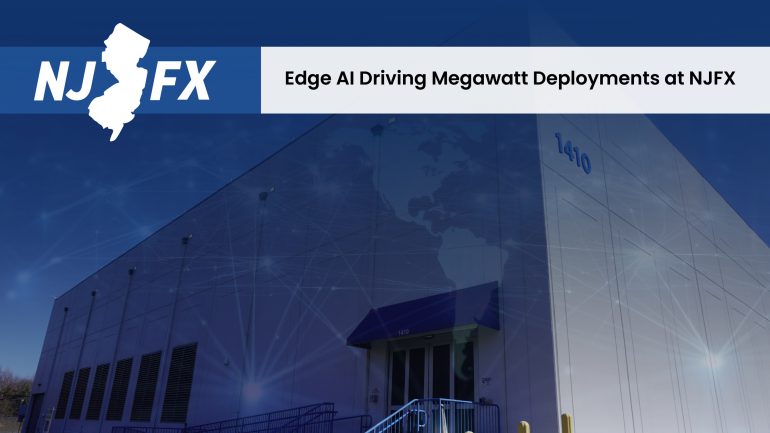- NJFX integrates Edge AI capabilities into its infrastructure.
- Positioned in the Tri-State Area, NJFX serves a population of over 50 million.
- The facility supports over 35 international and domestic network operators.
- Infrastructure includes onsite substation and flexible power densities from 4kW to 25kW per cabinet.
- Onsite N+1 Generator and Uninterruptible Power Supply systems ensure uninterrupted operations.
- New “First Line Maintenance” program supports subsea cable systems.
- Plans to support up to 5MW of Edge AI infrastructure with advanced water-based cooling solutions.
- High demand for GPU-intensive applications from enterprise customers.
Main AI News:
NJFX has set a new benchmark in digital infrastructure by integrating Edge AI capabilities into its operations. At the annual partners meeting on June 25, CEO Gil Santaliz outlined NJFX’s commitment to advancing connectivity and infrastructure resilience amidst emerging technologies.
Edge AI, a process that leverages AI models to discern patterns and objects in data at the network edge, is now a key focus for NJFX. Positioned strategically within the Tri-State Area and extending to the Northeast Megalopolis—a region housing over 50 million people—NJFX offers direct access to end users and is well-suited to support local Edge AI demands.
Founded with a vision to create a Tier 3 carrier-neutral colocation and cable landing station, NJFX has continually redefined connectivity. The facility’s design facilitates links between carrier-grade networks and major U.S. cities, accommodating more than 35 international and domestic operators. It serves as a vital hub where major cloud and network operators’ global backbones connect with transatlantic cables reaching Europe and South America.
NJFX’s infrastructure is engineered for high-demand operations, featuring direct access to an onsite substation and flexible power densities ranging from 4kW to 25kW per cabinet. This setup is complemented by onsite N+1 Generator and Uninterruptible Power Supply (UPS) systems, ensuring uninterrupted operations even during power disruptions.
The recent “First Line Maintenance” program, introduced by Santaliz, emphasizes NJFX’s dedication to supporting subsea cable systems and enhancing operational reliability. This initiative, alongside Front Haul capabilities acquired from Subcom in February 2024, underscores NJFX’s commitment to robust support for subsea cable operators.
Looking ahead, NJFX is preparing for the rise of Artificial Intelligence, particularly Edge AI. The facility’s design and advanced cooling solutions are geared to support high-performance GPUs essential for AI applications. Santaliz highlighted NJFX’s integration of AI cooling technology as a crucial component in accommodating the growing demand for AI.
Enterprise interest in deploying GPU-intensive applications within high-density environments at NJFX is already evident. The facility is set to support up to 5MW of Edge AI infrastructure, bolstered by innovative water-based cooling solutions.
NJFX’s evolution illustrates its commitment to global connectivity, resilient infrastructure, and adaptability to technological advancements. As the company continues to expand and refine its offerings, it remains dedicated to delivering exceptional service and positioning itself at the cutting edge of connectivity and AI deployment.
Conclusion:
NJFX’s advancement into Edge AI capabilities reflects a significant shift in how data centers are evolving to meet the increasing demands of artificial intelligence. By enhancing its infrastructure to support high-density, high-performance computing environments, NJFX is positioning itself as a key player in the AI deployment landscape. This move underscores a broader market trend where data centers are becoming pivotal in facilitating AI growth. Companies in the sector that adapt to these advancements and offer scalable, resilient solutions will likely capture a larger share of the growing AI market, benefiting from the rising demand for sophisticated, high-capacity infrastructure.

